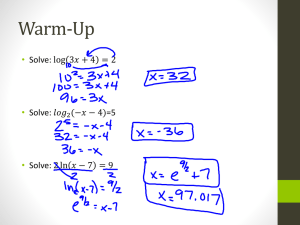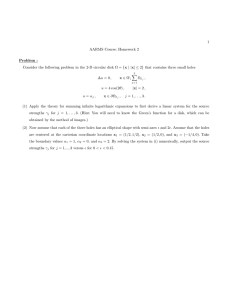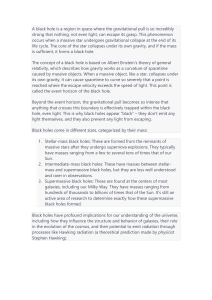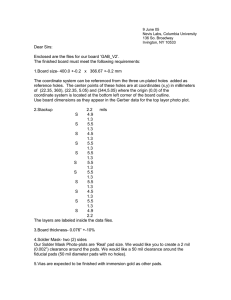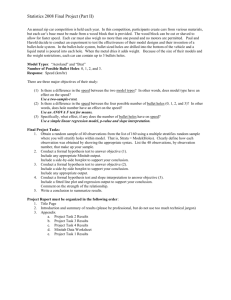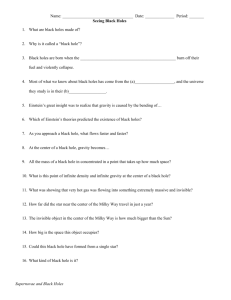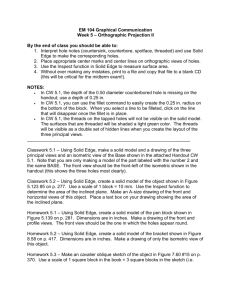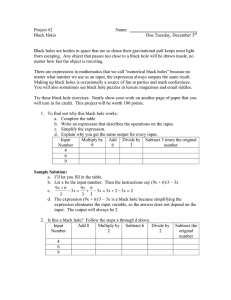PHYSICS 161: Black Holes in the Cosmos Instructor: Art Wolfe
advertisement
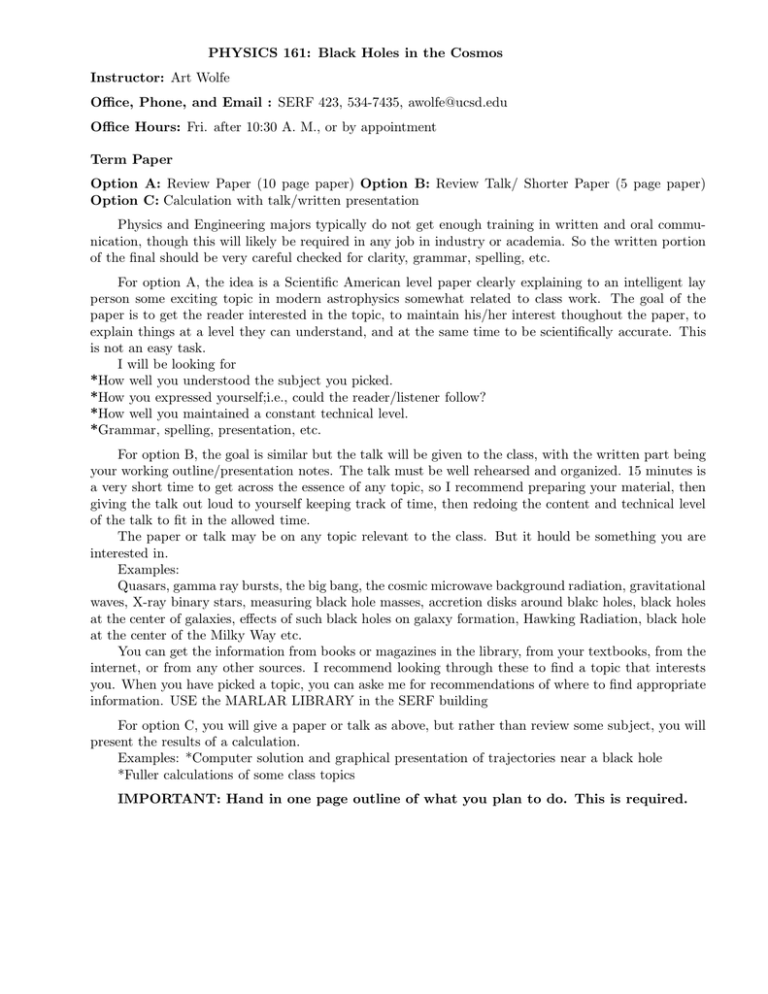
PHYSICS 161: Black Holes in the Cosmos Instructor: Art Wolfe Office, Phone, and Email : SERF 423, 534-7435, awolfe@ucsd.edu Office Hours: Fri. after 10:30 A. M., or by appointment Term Paper Option A: Review Paper (10 page paper) Option B: Review Talk/ Shorter Paper (5 page paper) Option C: Calculation with talk/written presentation Physics and Engineering majors typically do not get enough training in written and oral communication, though this will likely be required in any job in industry or academia. So the written portion of the final should be very careful checked for clarity, grammar, spelling, etc. For option A, the idea is a Scientific American level paper clearly explaining to an intelligent lay person some exciting topic in modern astrophysics somewhat related to class work. The goal of the paper is to get the reader interested in the topic, to maintain his/her interest thoughout the paper, to explain things at a level they can understand, and at the same time to be scientifically accurate. This is not an easy task. I will be looking for *How well you understood the subject you picked. *How you expressed yourself;i.e., could the reader/listener follow? *How well you maintained a constant technical level. *Grammar, spelling, presentation, etc. For option B, the goal is similar but the talk will be given to the class, with the written part being your working outline/presentation notes. The talk must be well rehearsed and organized. 15 minutes is a very short time to get across the essence of any topic, so I recommend preparing your material, then giving the talk out loud to yourself keeping track of time, then redoing the content and technical level of the talk to fit in the allowed time. The paper or talk may be on any topic relevant to the class. But it hould be something you are interested in. Examples: Quasars, gamma ray bursts, the big bang, the cosmic microwave background radiation, gravitational waves, X-ray binary stars, measuring black hole masses, accretion disks around blakc holes, black holes at the center of galaxies, effects of such black holes on galaxy formation, Hawking Radiation, black hole at the center of the Milky Way etc. You can get the information from books or magazines in the library, from your textbooks, from the internet, or from any other sources. I recommend looking through these to find a topic that interests you. When you have picked a topic, you can aske me for recommendations of where to find appropriate information. USE the MARLAR LIBRARY in the SERF building For option C, you will give a paper or talk as above, but rather than review some subject, you will present the results of a calculation. Examples: *Computer solution and graphical presentation of trajectories near a black hole *Fuller calculations of some class topics IMPORTANT: Hand in one page outline of what you plan to do. This is required.
